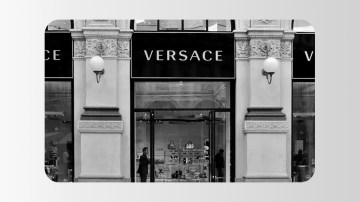This is an episode of the Glossy Beauty Podcast, which features candid conversations about how today’s trends are shaping the future of the beauty and wellness industries. More from the series →
Subscribe: Apple Podcasts • Spotify
Glossy has been obsessively tracking K-beauty’s mega-moment in the U.S. for months now, including its resurgence at Sephora, the growing presence of its color cosmetics and its expansion at Ulta, which launched 13 new K-beauty brands between July and August.
On this week’s episode of the Glossy Beauty Podcast, co-host Lexy Lebsack interviews co-host Sara Spruch-Feiner about her recent reporting on the topic, diving into what’s fueling K-beauty’s renewed popularity, what trending ingredients are capturing attention and how affordability continues to play a key role in the category’s appeal.
But first, Lebsack and co-host Emily Jensen discuss Martha Stewart’s incoming new beauty brand, Elm Biosciences, which was developed with past Glossy Beauty Podcast guest Dr. Dhaval Bhanusali. They also talk about Bath & Body Works’s push into college bookstores and Dyson’s new styling collection, designed to work alongside its heat styling tools.
Below are highlights from the episode, which have been lightly edited for clarity.
Why K-beauty is back
Spruch-Feiner: “When I first started deep-diving into this reporting for, really, the second time in my career, but the first time at Glossy, I was looking for a complicated answer, right? I was looking for something surprising. And it’s not surprising. It’s [just] social media. It’s TikTok. It dates back to Covid, and it dates back to people being at home and having more time to play around with things like sheet masks. It goes [back] to influencers educating people in a way that education and that explanation of things just hadn’t previously been available. So, in that way, it is [actually] quite a simple answer.”
The K-beauty 2.0 ingredients to have on your radar
Spruch-Feiner: “So basically, [spicules] are tiny, needle-like structures that are usually derived from marine sponges or silicone crystals. This is something I’m hoping to look into further in upcoming stories. They essentially create micro-channels in the skin, which is the same as micro-needling, to enhance the absorption of active ingredients and stimulate cell turnover and collagen production. In my story, it was more focused on this massive influx of new products to Ulta, so we kept it super simple. We just said: ‘There are products utilizing K-beauty’s innovative delivery mechanisms like spicules, which are often compared to micro-needling in a bottle.’ So, we have not even gotten to fully deep dive yet, but what I will say is that one of my predictions has been that we’re going to see U.S. brands start to adopt some of these technologies. And I can’t say who yet, but [it’s already] starting to happen with launches that I’m starting to hear about. … You can now find a sheet mask from almost any U.S. brand, and that obviously came from K-beauty. The same is going to happen with spicules, and I would expect that we’ll start to see [that with other new K-beauty trends, too].”
The price appeal
Spruch-Feiner: “Part of K-beauty’s appeal has always been that it does clock in at generally lower prices than many American brands and certainly legacy brands, like an Estée Lauder moisturizer versus a moisturizer from almost any Amorepacific brand, short of the ones that are known to be luxury brands [like Sulwhashoo]. I think of a brand like Aestura, which isn’t even the cheapest of the K-beauty brands. It’s not one of the ones that’s trading on kitschiness and youth, because then you can get even cheaper products. But it’s [what they call a] dermo-cosmetic brand. It’s found in dermatologists’ offices in Korea. So, for example, their barrier moisturizer cream [Atobarrier 365 Cream Moisturizer with Ceramides & Niacinamide for Skin Moisture Barrier Repair], which is a ceramide-rich moisturizer, is $32 for 2.7 ounces. … And when I look up ‘barrier cream’ on Sephora, Skinfix, for example, is $54 for 1.7 ouncs, which is a pretty big difference.”




